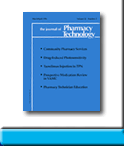 |
 |
ASSESSING ADHERENCE TO
AN INTRAVENOUS PANTOPRAZOLE GUIDELINE
Robert MacLaren,
Marilee D Obritsch, Deborah S Sherman, Rose Jung, and Douglas N
Fish
To request full article click here.
BACKGROUND: Despite minimal efficacy data, some institutions frequently use intravenous proton-pump inhibitors (PPIs), such as pantoprazole, for prevention of stress-related mucosal disease (SRMD) bleeding, or the treatment of nonvariceal upper gastrointestinal bleed (GIB). Due to the increased expense of intravenous pantoprazole compared with enteral PPIs, a guideline was implemented to reduce inappropriate use and provide dosing recommendations for SRMD and GIB.
OBJECTIVE: To comparatively assess the adherence rates before and after implementation of an institution-specific usage guideline for intravenous pantoprazole.
METHODS: A retrospective chart audit of consecutive patients receiving intravenous pantoprazole for 2 month periods before and after a guideline was implemented over a 2 month education period. The guideline restricted pantoprazole use to bleeding prevention of SRMD in patients unable to tolerate histamine2-receptor antagonists and to receive enteral administration of PPIs (80 mg/day or 40 mg twice daily) or patients with severe GIB (80 mg, then 8 mg/h). Outcomes assessed were the percentage of patients deemed appropriate to receive intravenous pantoprazole and compliance with dosing recommendations.
RESULTS: Overall, pantoprazole was appropriately chosen in 20 (42.6%) patients with SRMD and 34 (79.1%) of patients with GIB (p < 0.0001). Pantoprazole was appropriately chosen in 16 (55.2%) patients before and 24 (64.9%) patients after implementation of the guideline. The dosage regimen for SRMD was appropriate in 3 (21.4%) before-group patients and 10 (58.9%) after-group patients (p = 0.007). The dosage regimen for GIB was appropriate in 4 (26.7%) patients before and 6 (30%) patients after adoption of the guideline. Length of stay in the intensive care unit was shorter for the after group for both SRMD and GIB, and the mortality rate was lower in the after group for SRMD only, but these outcomes were likely unrelated to implementation of the guideline.
CONCLUSIONS: An intravenous pantoprazole guideline did not change appropriate patient selection and improved prescribing practices for SRMD only.
J Pharm Technol 2005;22:15-21.
To request full article click here.
|
|
|
||
|

